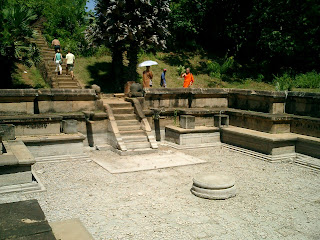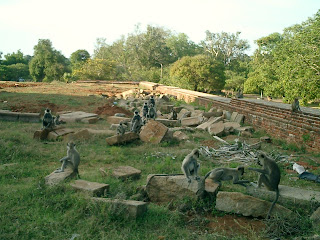Eco-crisis and Individual
Wednesday, November 5, 2008
Nature is the first teacher of man. We cannot divorce man from the nature and its surrounding living creatures. An Australian ecologist called John Seed says “we need to see ourselves not as isolated skinned and capsulated egos but as part of the larger body of the Earth”. Man, animal and other creatures as well as the natural resources depended on one another from the start. Everything on earth had served one way or other for living and survival. We humans are related to or made entirely of non-human elements like natural greeneries, earth, water, clouds, sunshine etc. which make us a part of the nature. For the long lasting survival of mankind, the ecosystem needs to be respected highly and preserved. Protecting human life is not possible without also protecting the lives of animals, plants, and minerals. All living sentient beings in one way or another are totally interdependent towards each other for their own survival.
Natural environments like forests and plant life served men and wildlife with numerous benefits, social, economical and environmental. Many daily needs like papers and timbers as well as minerals, and petroleum are forest provided. It shelters the wildlife habitat and provides recreational opportunities. Vegetables and plants are taken as food by man as well as animals for their living. Various plants and roots are used as medicinal drugs for healing purposes. It also plays a critical role in the management of global climate. The leaves of trees and plants absorb the deadly and polluted gases like carbon-dioxide which is responsible for global warming and climate change and releases oxygen in the process of photosynthesis. The trees block the polluted air and rainwater making them settled which helps the air to get purified and maintains an even flow of water to rivers and lakes preventing flood holding the soil still.
The relationship between the plant life and animals is mutual. Men, animals (i.e. baboons, monkey squirrels), nectar collecting birds (i.e. humming birds, bats, sunbirds,) and insects (i.e. ants, bees, flies) help plants for the pollination by indirect ways of carrying the seeds one place to another and spreading them out. Various types of termites play their part for the enrichment of the soil by the woody material works and building termite-mounds with large amount dead leaves, which circulates fresh nutriment to the plants, and help the soil to get fertilized.
But man, without just trying to meet his needs, corrupts the whole natural ecosystem trying to fulfill his wants filled with greed, hatred and delusion. Maurice F. Strong in his article The United Nations and the Environment says: “In these closing decades of the twentieth century modern man is a paradox of extremes. He possesses untold knowledge and wealth, but these have brought no universal end to the indignity of poverty and ignorance. He has conquered space, but on earth he is unable to overcome conflicts and inequities. His mastery of science and technology gives him unprecedented power, but his living world is threatened as at no time since his planetary home first gave him warmth and shelter”. Due to the advancement of science and multi-faceted uses of technology, the living environment is faced with destructive thread challenging the healthy eco-system. Excessive urbanization and industrialization of the natural environment is immensely in danger destroying the natural environmental beauty. Vast forest areas are cleared out destroying thousands of tress. Various chemical industrial factories are coming up polluting the whole atmosphere with chemical discharge (i.e. air pollution, water pollution etc) causing various new deceases, Due to air pollution with toxic gases daily, there is the incensement of heat in the air, damaging ozone layer, malting of snow in the North Pole, arising of the sea water level, decreasing of the land area, widening of desert, decreasing pure water, destruction of wild life, disappearing of botanical verity, increasing atomic raise in the environment.
Very little is being done in spite of the fact that the human demands on the Earth's ecosystems cannot continue much longer without severe repercussions for both humans and other species. The natural resources and minerals that took billions of years to form are consumed within couple of years. I would like to quote Krishna Chaitanya from his ‘Profile of Indian Culture’ saying: “With the growth of the megalopolis and with town-planners thinking in terms of continuous conurbation extending right across continents, man is tending to forget how profoundly his life is linked with that of nature. He has stripped the hills and valleys of their mantle of green and the rivers, thus abetted in their assault on the weakened earth, are washing away the future into the sea. It is the forest cover that conserves the soil from erosion, regulates the flow of streams and purifies the air we breathe”.











 Morning view of Siri pada
Morning view of Siri pada



































